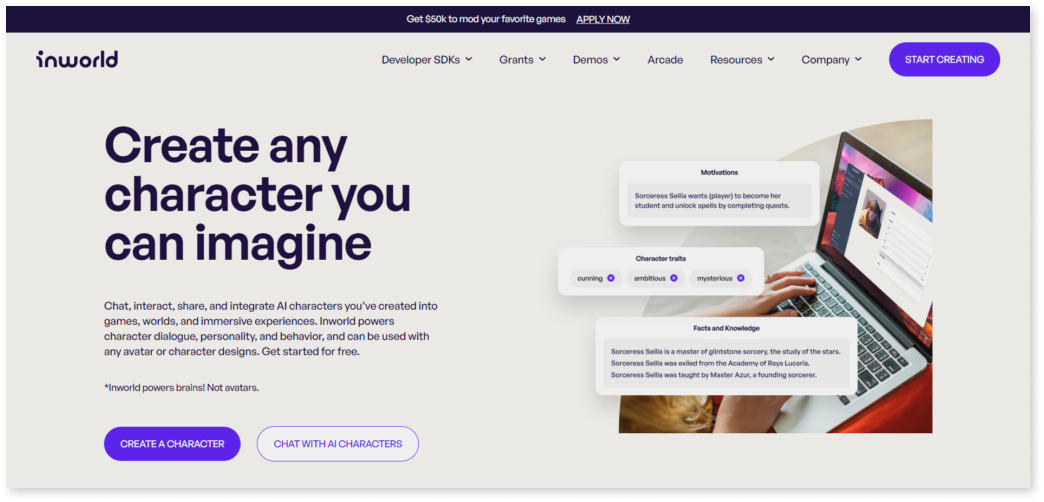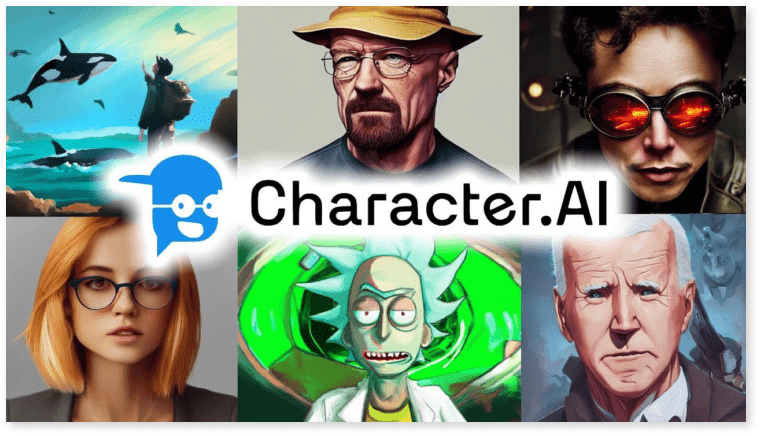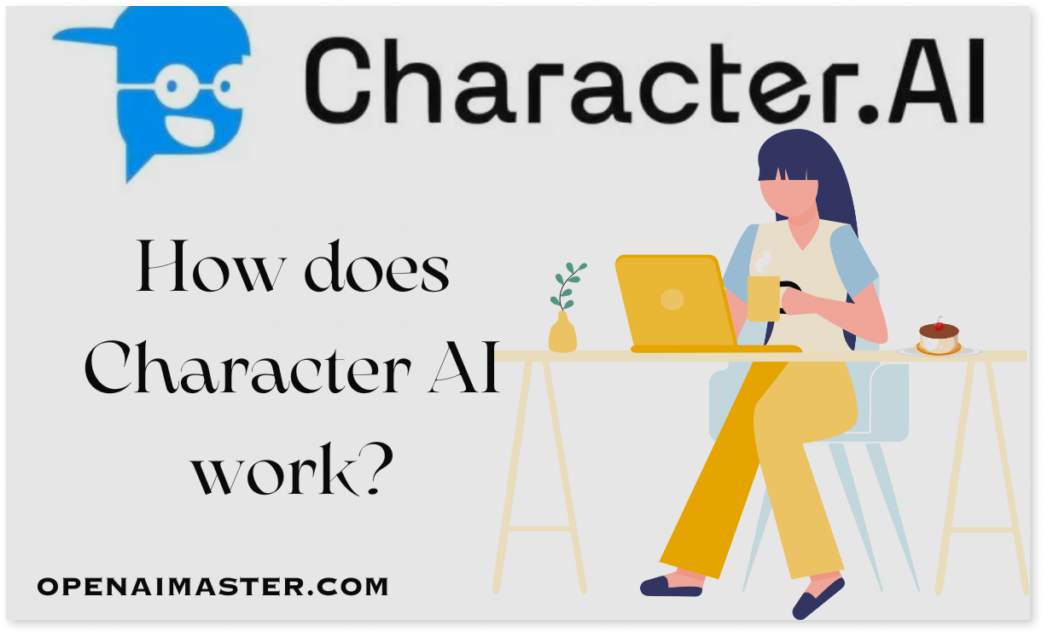Are you tired of predictable interactions in gaming?
The dichotomy between Character AI and Inworld AI within gaming landscapes has been a pivotal point of evolution, redefining immersive experiences. Picture yourself in Skyrim, surrounded by a vibrant, living world driven by Inworld AI that reacts dynamically to your actions.
Contrast this with the nuanced conversations facilitated by Character AI chatbots or the marvel of an AI Character Generator creating personas within seconds.
The pain points. Stagnation.
Mundane predictability robs us of the magic of gaming. However, understanding the intricate differences between these AI types offers a glimpse into the future of gaming. Inworld AI transforms environments into dynamic ecosystems, while Character AI brings individuality and depth to interactions.
Exploring their worlds provides insights into the backbone of gaming innovation, promising experiences that defy convention and elevate immersion to unprecedented heights. Join us on a journey through the world of AI, unlocking the secrets that shape the very fabric of gaming reality.
What is Inworld AI?

Inworld AI represents the heartbeat of immersive worlds, the sorcerer behind living, breathing universes within virtual landscapes. It’s the conjurer weaving enchantment into gaming worlds, orchestrating the dance of every NPC, and infusing life into the very essence of the environment. This magical force transforms mere pixels into responsive, dynamic entities, where the echo of a player’s footsteps ripples through the fabric of a simulated world.
Inworld AI crafts a stage where each action sparks a reaction, where NPCs possess a mind of their own, shaping an ever-evolving tapestry of experiences. It’s the wizardry that blurs the lines between the real and the imagined, fostering worlds that beckon exploration and promise boundless adventures.
What is Character AI?

Character AI stands as the virtuoso architect of immersive interactions, sculpting personalities that transcend mere pixels. It breathes life into game personas, endowing them with unique traits, nuanced behaviors, and the ability to engage players in captivating dialogues. What sets Character AI apart lies in its mastery of individuality—each character possesses a distinct essence, offering players a rich tapestry of experiences.
Its prowess in crafting lifelike interactions, coupled with adaptability and responsiveness, elevates gaming to unparalleled heights. Character AI isn’t just an entity; it’s a conduit, forging connections between players and virtual personas, fostering emotional resonance, and etching unforgettable adventures in the gaming world.
What are the features of Inworld AI and Character AI?

1. Behavioral Scope
- Inworld AI: Governs the behavior of the entire game world, including non-playable characters and environmental elements. It focuses on creating dynamic, responsive ecosystems where entities interact based on the player’s actions.
- Character AI: Concentrates on individual entities within the game, such as NPCs, companions, or adversaries. It’s responsible for giving these characters distinct personalities, decision-making abilities, and dialogue, enhancing player interactions.
2. Interaction Dynamics
- Inworld AI: Facilitates a holistic, environment-wide response to the player’s actions. It enables the world to adapt, and change based on events, creating a sense of immersion and realism.
- Character AI: Provides depth to individual character interactions, offering unique responses and behaviors. This AI governs conversations, reactions, and personalized experiences within the game.
3. Complexity and Adaptability
- Inworld AI: Focuses on creating complex, adaptable systems that react to various stimuli and player choices, altering the environment’s dynamics.
- Character AI: Prioritizes individual character depth, adapting behaviors based on specific interactions and pre-defined personality traits or roles.
4. Impact on Gameplay
- Inworld AI: Enhances overall gameplay immersion by creating living, breathing worlds that respond to player actions, fostering a sense of realism and unpredictability.
- Character AI: Elevates the quality of individual interactions, adding depth and uniqueness to the player’s engagements within the game.
5. Technical Implementation
- Inworld AI: Requires robust systems to manage various entities and their interactions within the game world, often focusing on large-scale behavioral simulations.
- Character AI: Emphasizes creating nuanced behaviors and dialogue for specific characters, sometimes utilizing machine learning and natural language processing for richer interactions.
How does Character AI work?

Character AI functions by employing algorithms and decision-making processes to simulate human-like behavior within specific entities or characters in a game or virtual environment. Here’s a breakdown of its workings:
1. Decision Trees/Algorithms
AI-driven decision-making algorithms or decision trees determine how characters respond to stimuli or situations. These algorithms consider various factors such as the character’s traits, the game environment, player actions, and potential outcomes to make decisions.
2. Reactive Responses
Characters equipped with AI can react dynamically to changing situations. This includes adapting responses based on player interactions, environmental changes, or in-game events. These reactions aim to create a sense of realism and immersion.
3. Learning and Adaptation
Advanced Character AI systems may incorporate machine learning algorithms. These algorithms enable characters to learn from player interactions or their own experiences in the game, gradually adapting their behaviors over time.
4. Dialogue Systems
Character AI often includes dialogue systems powered by natural language processing (NLP). These systems enable characters to engage in conversations with players, responding contextually to inquiries or statements.
5. Scripting and Animation
AI controls character movement and actions, often coordinating with scripted events or animations to ensure coherent and synchronized behavior within the game world.
How does inworld AI work?

1. Environmental Dynamics and NPC Behavior
Inworld AI operates as the underlying framework governing the behavior of the entire game world. It orchestrates the actions and reactions of non-playable characters (NPCs) and the environmental elements. NPCs within the game are imbued with intelligence that allows them to respond dynamically to the player’s actions and changes within the environment.
2. Adaptive Systems and Dynamic Responses
The core functionality of Inworld AI involves creating adaptive systems capable of dynamically responding to stimuli. These systems generate varied reactions and behaviors based on a multitude of factors, including player choices, in-game events, and environmental changes. This adaptability is crucial in shaping a realistic and immersive gaming experience.
3. Interactive Ecosystems and Real-time Adjustments
Inworld AI constructs interactive ecosystems where the behavior of NPCs and environmental elements is interconnected. It facilitates real-time adjustments in response to the player’s interactions, ensuring that the game world feels alive and evolves according to the player’s choices and actions.
4. Complex Algorithms and Simulation
Under the hood, Inworld AI utilizes complex algorithms and simulations to manage the behaviors of numerous entities simultaneously. These algorithms consider various parameters and dependencies to create a coherent and responsive gaming environment.
5. AI-Driven World Building and Immersive Experiences
By integrating Inworld AI, game developers can craft immersive experiences that transcend traditional gaming boundaries. It’s pivotal in constructing lifelike, evolving worlds where the environment itself becomes an active participant, enhancing player engagement and realism.
What are the limitations of both Inworld AI and Character AI?

Limitations of Inworld AI
- Complexity Constraints: Creating sophisticated and truly adaptive Inworld AI systems can be challenging due to the complexity of managing multiple entities and their interactions. Balancing realism with computational resources poses limitations.
- Resource Intensive: Inworld AI systems can demand substantial computational resources, especially when simulating large-scale environments with numerous interacting elements. This can restrict their implementation on less powerful devices or constrain the scale of simulations.
- Predictability: Despite efforts to create dynamic environments, Inworld AI may still exhibit patterns or predictable behaviors, impacting the perceived realism and unpredictability desired in gaming experiences.
- Design Limitations: Designing robust Inworld AI that reacts convincingly to every player action or scenario can be challenging. Certain situations might not have predefined responses, leading to breaks in immersion or unanticipated outcomes.
Limitations of Character AI
- Conversational Limitations: While Character AI has made strides in natural language processing, limitations persist in generating truly human-like conversations. Contextual understanding and maintaining coherent dialogues across diverse topics can be challenging.
- Repetitive Responses: Character AI systems, especially in games with limited dialogue options, can fall into patterns, offering repetitive or limited responses. This can hinder the illusion of varied and unique interactions.
- Learning Curve: Implementing advanced learning algorithms in Character AI to adapt to player behaviors or preferences requires significant development efforts. Training AI models to accurately reflect varied personalities or behaviors can be time-consuming.
- Ethical Challenges: Character AI might unintentionally perpetuate biases or unintended behaviors due to the data used for training. Balancing ethical considerations and ensuring AI-driven characters align with diverse and inclusive representations remains a challenge.
Conclusion
This article is a helpful guide shedding light on the intricacies of Inworld AI within Unity, login nuances, and the evolving landscape of beta Character AI. Exploring Character AI NSFW alternatives unveil diverse facets of AI integration. While both Inworld AI and Character AI possess distinct strengths and limitations, determining the “best” AI is subjective.
Each serves a unique purpose: Inworld AI crafts immersive environments, while Character AI enriches interactions. Ultimately, the synergy between these AI worlds births unparalleled gaming experiences. As AI evolves, the boundary between virtual and reality blurs, echoing Arthur C. Clarke’s words,
“Any sufficiently advanced technology is indistinguishable from magic.”
FAQs
Q. Is Inworld AI free?
Inworld AI solutions vary; some platforms offer basic versions for free, while advanced features may require paid subscriptions.
Q. What does Inworld AI do?
Inworld AI governs NPCs and environmental elements in games, creating dynamic, responsive ecosystems that react to player actions.
Q. Is Inworld AI safe?
Generally, Inworld AI is safe within game environments; however, safety measures depend on how it’s implemented by developers.
Q. Does Inworld AI use GPT?
Inworld AI systems might utilize GPT or similar natural language processing models for dialogue generation, but it depends on the specific implementation.
Q. Can Character.AI see your messages?
Character.AI, like chatbots or conversational AI, processes and responds to messages within predefined contexts or platforms.
Q. Is Character.AI safe for 13-year-olds?
Safety in AI platforms varies; parental guidance and platform moderation are crucial for ensuring safe interactions, especially for younger users.
Q. Why is Character.AI popular?
Character. Ai’s popularity stems from its ability to create engaging conversations, interactive storytelling, and personalized experiences in gaming or chat applications.
Q. Is Character.AI having issues?
Like any software, Character.AI might encounter occasional technical glitches or updates. Checking the platform’s status or support can provide information on ongoing issues.
Q. How do I log into beta Character AI?
Access to beta versions of Character AI may require registration or invitations through the platform’s website or developer channels.
Q. Can I use beta Character AI for free?
Some beta versions might offer free access, while others could have limited free trials or require subscription fees for advanced features.
Q. Is beta Character AI safe?
Safety depends on how the beta AI is used and regulated; user privacy, data security, and ethical guidelines are critical considerations in AI development and usage.